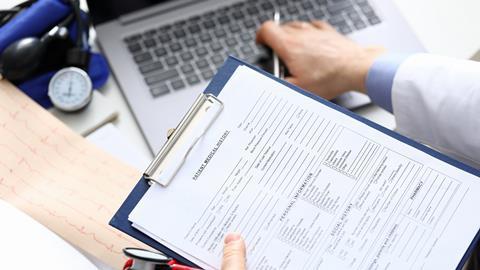Kevin Perkins, technical lead and operations manager at law firm Carpenters Group, explains why medical reports within the Official Injury Claim portal are facing greater scrutiny as expert evidence is increasingly questioned
I have read a number of articles recently discussing the accuracy of medical evidence within the Official Injury Claim (OIC) portal, which was introduced in May 2021.
There has been a particular focus on medical experts’ apparent failure to identify the mechanics of certain injuries and defendants wishing to raise causation arguments where it is felt that the claimant has not come up to proof.

The courts are clearly comfortable dealing with causation issues. But what should happen to OIC portal claims where, for example, a claimant claims to have sustained an injury and a medical expert offers an explanation of how that injury occurred, but the explanation itself seems so implausible that it casts doubt on the veracity of the injury in its entirety?
Examples of such situations include claims where the claimant hits their knee on a dashboard, or an elbow on a central control, but the circumstances of the accident don’t support that chain of events.
Such circumstances bring to the fore the non-tariff table element of any damages award, which poses questions for claimants, defendants and judges.
Is plausibility of injury a causation argument, or is it tantamount to an allegation of dishonesty or fraud? If the latter, is it appropriate that the claim even remains within the OIC portal, where positive assertions of fraud have to be made early and often cause the claim to be removed from the OIC portal process altogether?
What doesn’t help is the generic nature of the Small Claims Notification Form (SCNF), which gives the individual completing it a very wide ambit to subjectively report their alleged injuries.
In an environment geared towards litigants in person and with the requirement of a claimant to complete a statement of truth, this is perhaps a dangerous cocktail and something that insurers will scrutinise heavily.
While not an unequivocal solution, a possible step forward centres on quality control and closer cooperation with medical report provider Medco to highlight the production of reports that diagnose opportunistic or implausible injuries.
At September 2024’s Fraud Charter meeting, such cooperation was actively encouraged.
By highlighting these issues, the hope is that the overall quality of medical reports will improve, with the onus being on experts to actively question themselves on how a purported injury came to pass.
Such an improvement would go a long way in allowing claims to be assessed appropriately and settled proactively and fairly.

Hosted by comedian and actor Tom Allen, 34 Gold, 23 Silver and 22 Bronze awards were handed out across an amazing 34 categories recognising brilliance and innovation right across the breadth of UK general insurance.



















































